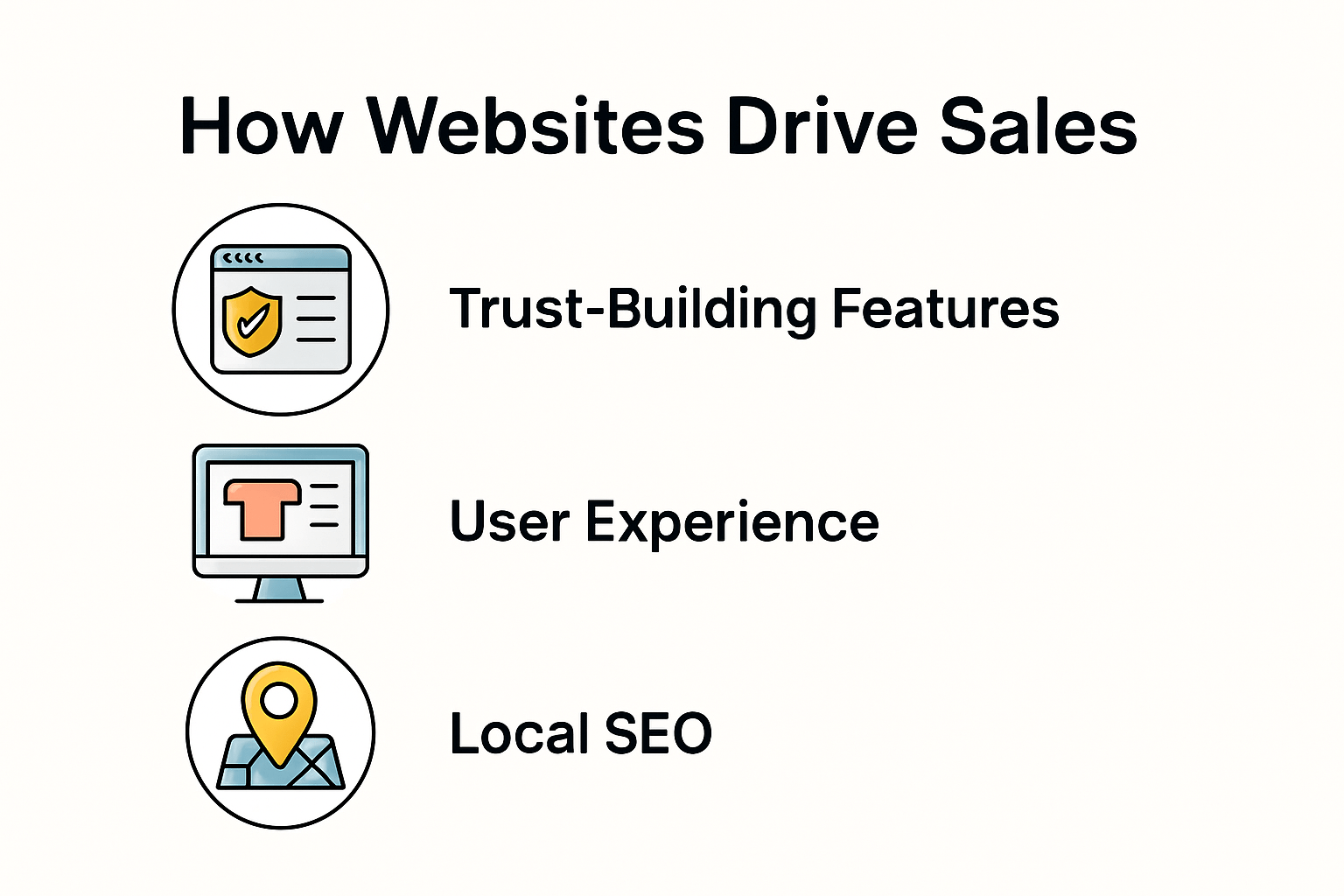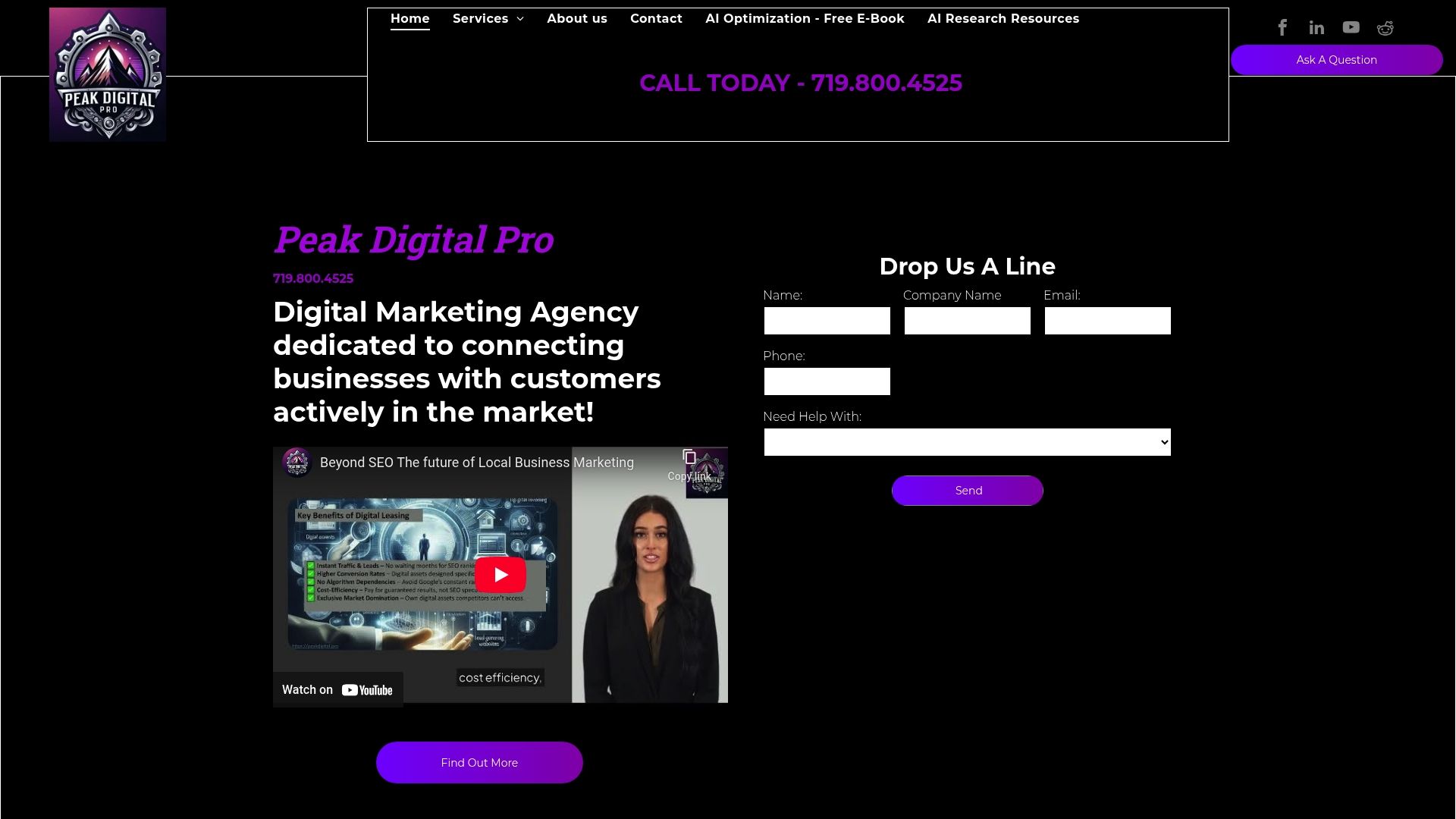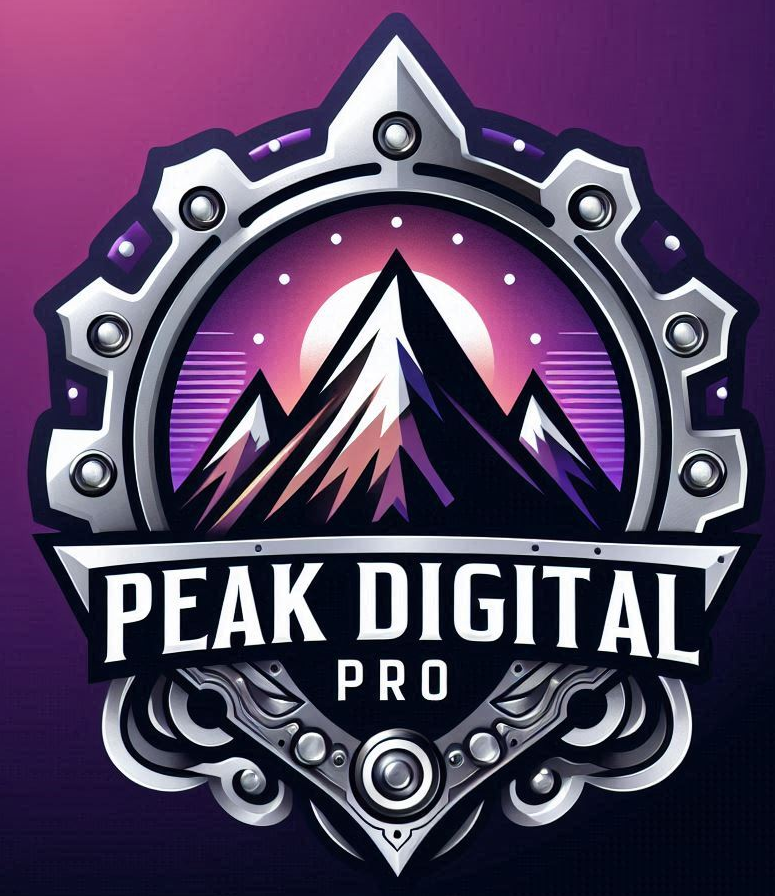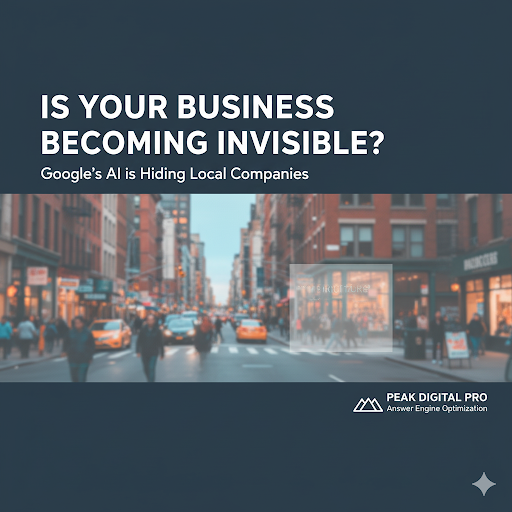How Websites Drive Sales: Key Strategies for Business Owners in 2025

Websites are set to control more sales decisions than ever, with 94 percent of first impressions influenced by web design and a staggering 85 percent of shoppers leaving if a site feels untrustworthy . That sounds straightforward, right? Fast sites, flashy designs, airtight security. But here’s the kicker. The real battle for sales in 2025 is won not by good looks or speed alone but by how invisibly your site builds credibility and nudges buying intent from the moment someone lands on it. What actually turns a curious click into a committed customer might just surprise you.
Table of Contents
Quick Summary
| Takeaway | Explanation |
|---|---|
| Build Customer Trust with Security Features | Incorporate SSL certificates and trust badges from recognized providers to enhance online credibility, as 85% of consumers exit untrustworthy sites. |
| Optimize Design for User Experience | Implement intuitive navigation and fast loading times, as websites loading in 2.5 seconds can enhance user trust by up to 70%. |
| Leverage Local SEO for Visibility | Optimize Google My Business profiles and use location-specific content to capture local search traffic, as 78% of mobile local searches drive offline purchases. |
| Utilize Advanced Web Analytics | Employ modern analytics tools to track individual visitor journeys and conversion rates, allowing for data-driven decisions and targeted sales strategies. |
| Implement Predictive Analytics | Use machine learning algorithms for sales forecasting and lead scoring to optimize resources and enhance conversion potential. |

Website Features That Build Customer Trust
In the digital marketplace of 2025, customer trust is no longer a luxury but a fundamental requirement for business survival. Websites serve as the primary digital storefront for most businesses, and their design and functionality directly impact potential customers’ perceptions and purchasing decisions.
Security and Credibility Elements
Website security represents the foundational layer of customer trust. Research from Norton Security reveals that 85% of consumers will immediately exit a website that appears untrustworthy or lacks basic security measures. Critical security features include SSL certificates, which encrypt data transmission and display the padlock icon in browser address bars, signaling to visitors that their personal information remains protected.
Visual credibility markers play an equally significant role. Strategically placed trust badges from recognized security providers like McAfee or Norton, clear privacy policy statements, and transparent contact information communicate professionalism and reliability. These elements reassure visitors that your business is legitimate and committed to protecting their interests.
User Experience and Transparent Design
A well-designed website communicates trustworthiness through intuitive navigation, clean aesthetics, and responsive functionality. Google’s Web Vitals research indicates that websites loading within 2.5 seconds and providing smooth interactions can increase user trust by up to 70%. Mobile responsiveness is no longer optional but essential, as over 60% of internet traffic now originates from mobile devices.
Transparency in design means presenting clear pricing, comprehensive product information, authentic customer reviews, and easily accessible support channels. Incorporating video testimonials, case studies, and real customer experiences transforms abstract trust signals into tangible evidence of your business’s capabilities. As Nielsen Norman Group suggests, authentic social proof significantly influences consumer decision making.
Advanced Trust-Building Technologies
Emerging technologies offer sophisticated methods of building digital trust. Live chat features with real-time human support, AI-powered chatbots that provide instant responses, and clear communication pathways demonstrate your commitment to customer service. A study by Salesforce found that 83% of customers expect immediate engagement when contacting a business online.
As Diviflash website statistics confirm, a secure website with zero downtime significantly enhances user trust and credibility. Implementing robust hosting solutions, regularly updating website security protocols, and maintaining consistent performance are non-negotiable aspects of modern digital presence.
Ultimately, building customer trust through your website is a comprehensive strategy involving technical reliability, transparent communication, and genuine commitment to user experience. By prioritizing these elements, businesses can transform their digital platforms from mere information repositories to powerful trust-building engines that drive sales and foster long-term customer relationships.

How Design and Content Encourage Purchases
In the competitive digital marketplace of 2025, website design and content are not merely aesthetic choices but powerful psychological tools that directly influence purchasing decisions. Every visual element and written word serves a strategic purpose in guiding potential customers toward conversion.
Visual Psychology and User Experience
Research from Hostinger reveals that an astounding 94% of first impressions are influenced by web design, with 75% of visitors perceiving well-designed websites as more trustworthy. This means that visual design is not just about looking good but about creating an immediate emotional connection that encourages users to explore and ultimately purchase.
Written content must balance emotional appeal with concrete information. Conversion rate optimization experts suggest that effective product descriptions should address three key psychological triggers: solving a specific problem, offering unique benefits, and creating a sense of urgency. This approach transforms passive information consumption into active purchasing intent.
User experience (UX) design plays a critical role in removing psychological barriers to purchase. Studies indicate that great UX design can increase conversion rates by up to 400%. This dramatic improvement stems from creating intuitive navigation, clear visual hierarchies, and seamless interactions that reduce cognitive friction. Strategic use of color psychology, typography, and whitespace can subtly guide users’ attention toward key conversion elements like product descriptions, pricing, and call-to-action buttons.
Strategic Content Positioning
Content serves as the narrative engine that transforms visual interest into purchasing motivation. Nielsen Norman Group research demonstrates that users typically scan web content in an F-shaped pattern, meaning the placement and structure of information critically impact engagement. Compelling product descriptions, strategically positioned testimonials, and clear value propositions must align with this natural reading behavior.
Conversion-Oriented Design Elements
Hostinger’s web design statistics highlight a critical insight: 38% of users will immediately leave a website if the design or content appears poor. This underscores the importance of implementing conversion-oriented design elements such as:
- Clear Call-to-Action Buttons : Prominently displayed, contrasting buttons that stand out and communicate exact next steps
- Social Proof : Strategically placed customer reviews, case studies, and trust indicators
- Simplified Purchase Paths : Minimizing form fields, offering guest checkout, and providing multiple payment options
Additionally, responsive design is no longer optional. With mobile traffic dominating internet usage, websites must provide seamless experiences across all device types. Mobile optimization directly correlates with increased conversion rates, as users expect instant, frictionless interactions regardless of screen size.
Successful websites in 2025 understand that design and content are not separate entities but integrated strategies for driving sales. By creating visually compelling, psychologically resonant digital experiences that anticipate and address user needs, businesses can transform their websites from passive information platforms into powerful sales engines that guide customers effortlessly from curiosity to commitment.
Local SEO and Online Visibility for Colorado Businesses
For Colorado businesses, local search engine optimization (SEO) represents a critical strategy for driving sales and connecting with nearby customers. In an era where digital presence directly translates to business success, understanding and implementing targeted local SEO techniques can mean the difference between thriving and merely surviving.
The Power of Local Search
Backlinko research reveals that 8 in 10 US consumers search for local businesses online at least once a week, underscoring the immense potential of local digital marketing. For Colorado businesses, this means creating a hyper-targeted online strategy that speaks directly to local consumers. Colorado Web Impressions highlights an extraordinary statistic: 78% of mobile local searches result in an offline purchase within a day, demonstrating the immediate and tangible impact of effective local SEO.
Google My Business (GMB) optimization emerges as a cornerstone of local visibility. A complete, verified GMB profile with accurate business information, high-quality images, regular updates, and genuine customer reviews can significantly boost local search rankings. Businesses that consistently manage their GMB listings see up to 70% increase in local search visibility, making it a critical tool for attracting nearby customers.
Strategic Local Content and Keyword Targeting
Creating location-specific content requires more than simply mentioning Colorado. Local SEO experts recommend developing content that genuinely resonates with the local community. This means incorporating region-specific keywords, addressing local challenges, and highlighting community connections. For instance, a Colorado Springs business might create content about local events, regional business challenges, or mountain-related services that demonstrate deep local understanding.
Keyword strategy for local businesses goes beyond generic terms. Long-tail keywords that combine service offerings with specific locations (e.g., “premium web design services in Colorado Springs”) help businesses capture more targeted search traffic. Moz research indicates that hyper-local, specific keywords can improve search rankings by up to 50% compared to broad, generic terms.
Technical SEO and Local Visibility
Technical aspects of local SEO extend far beyond keyword placement. Schema markup for local businesses provides search engines with structured data about your business, including operating hours, services, and geographic location. Schema.org documentation demonstrates how this technical optimization can dramatically improve search result appearances, potentially increasing click-through rates by 30%.
Mobile optimization becomes even more critical for local searches. With over 60% of local searches happening on mobile devices, websites must provide seamless, fast-loading experiences. Google’s mobile-first indexing means that mobile performance directly impacts search rankings. Responsive design, fast loading speeds, and easy-to-use mobile interfaces are no longer optional but essential for local business survival.
The landscape of local SEO in 2025 demands a holistic approach. By combining strategic content, technical optimization, and genuine local engagement, Colorado businesses can transform their online presence from passive digital real estate to dynamic customer acquisition engines. Success lies not just in being found, but in creating meaningful digital connections that translate directly into business growth and community impact.
Tracking Sales Growth With Web Tools
In the digital ecosystem of 2025, tracking sales growth is no longer about gut feelings or manual spreadsheets but about leveraging sophisticated web tools that provide real-time, actionable insights. Advanced analytics and tracking technologies have transformed how businesses understand, predict, and accelerate their sales performance.
Comprehensive Web Analytics
Sales Panel research reveals that modern website analytics platforms can now track individual visitor journeys with unprecedented granularity. These tools capture leads automatically through webforms and live chat, syncing behavioral and firmographic data directly into customer relationship management (CRM) systems. This 360-degree view enables businesses to understand exactly how website interactions translate into potential sales opportunities.
Google Analytics 4 and similar platforms offer deep insights beyond traditional metrics. They track user engagement paths, conversion rates, and even predict potential customer behaviors. Conversion tracking now goes far beyond simple page views, providing nuanced understanding of how different website elements contribute to sales generation. For instance, businesses can now pinpoint exactly which landing pages, content pieces, or call-to-action buttons drive the most meaningful customer interactions.
Sales Tracking and Pipeline Management
Zendesk research demonstrates that integrating sales tracking software with marketing and customer service functions creates a comprehensive workflow monitoring system. These tools allow business owners to track the entire sales cycle, from initial website interaction to final purchase, generating comprehensive reports that inform data-driven strategic decisions.
GetWeFlow analysis highlights key features of modern sales tracking tools: real-time visibility into leads, deal progression, sales activities, lead management, deal tracking, sales forecasting, and advanced reporting capabilities. By providing a centralized platform that connects various business functions, these tools eliminate information silos and create a more cohesive sales ecosystem.
Predictive Analytics and Performance Optimization
Advanced web tools in 2025 are not just about tracking past performance but predicting future outcomes. Machine learning algorithms can now analyze historical sales data, website interaction patterns, and customer behavior to generate highly accurate sales forecasts. Predictive lead scoring helps businesses prioritize potential customers most likely to convert, optimizing sales team efforts and resources.
Key performance indicators (KPIs) have become more sophisticated. Beyond traditional metrics like conversion rates, businesses now track complex measurements such as customer acquisition cost , lifetime value , and return on advertising spend . These metrics provide a holistic view of sales performance, enabling more strategic decision making.
The integration of AI and machine learning technologies has revolutionized sales tracking. Automated tools can now identify trends, anomalies, and opportunities that human analysts might miss. They provide real-time alerts, suggest optimization strategies, and even recommend personalized engagement approaches for different customer segments.
In 2025, successful businesses recognize that web tools for tracking sales growth are not optional technological add-ons but critical strategic assets. By embracing these advanced analytics platforms, companies can transform raw digital data into actionable intelligence, driving more targeted, efficient, and ultimately more profitable sales strategies.
Frequently Asked Questions
What website features enhance customer trust?
Incorporating SSL certificates, trust badges from recognized security providers, clear privacy policies, and accessible contact information significantly enhance customer trust by reassuring visitors of the website’s security and professionalism.
How does website design influence purchasing decisions?
Website design influences purchasing decisions by creating a strong first impression, enhancing user experience through intuitive navigation, and utilizing visual and psychological elements that guide users toward conversion.
Why is local SEO important for businesses?
Local SEO is crucial for businesses because it improves online visibility, captures local search traffic, and enhances engagement with nearby customers, leading to increased foot traffic and offline purchases.
What tools can help track sales growth on a website?
Comprehensive web analytics platforms, sales tracking software, and predictive analytics tools can help track sales growth by providing insights into user engagement, conversion rates, and predicting future customer behaviors.
Ready for a Website That ACTUALLY Drives Sales?
Have you noticed that even with strong web traffic, turning visitors into real customers often feels like a guessing game? The article highlighted how critical credibility, user experience, and local visibility are for conversions in 2025. Yet many business owners struggle with dated designs, slow sites, or SEO that misses top local searches. These pain points cost you trust, momentum, and sales growth.

Take control of your digital future today. Peak Digital Pro transforms Colorado businesses into local leaders by combining advanced web development with AI-powered marketing strategies. Instantly boost your online credibility and get found by the customers searching for you right now. Visit our homepage to schedule your free strategy session. Start building a website that wins your customers’ trust––and captures more sales––before your competition does.








